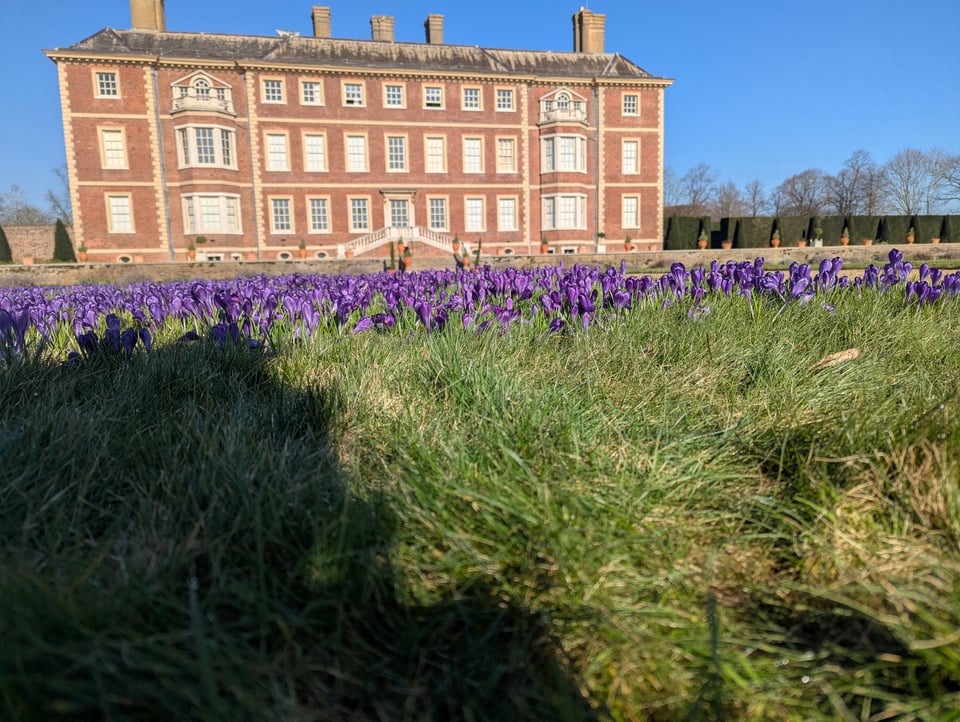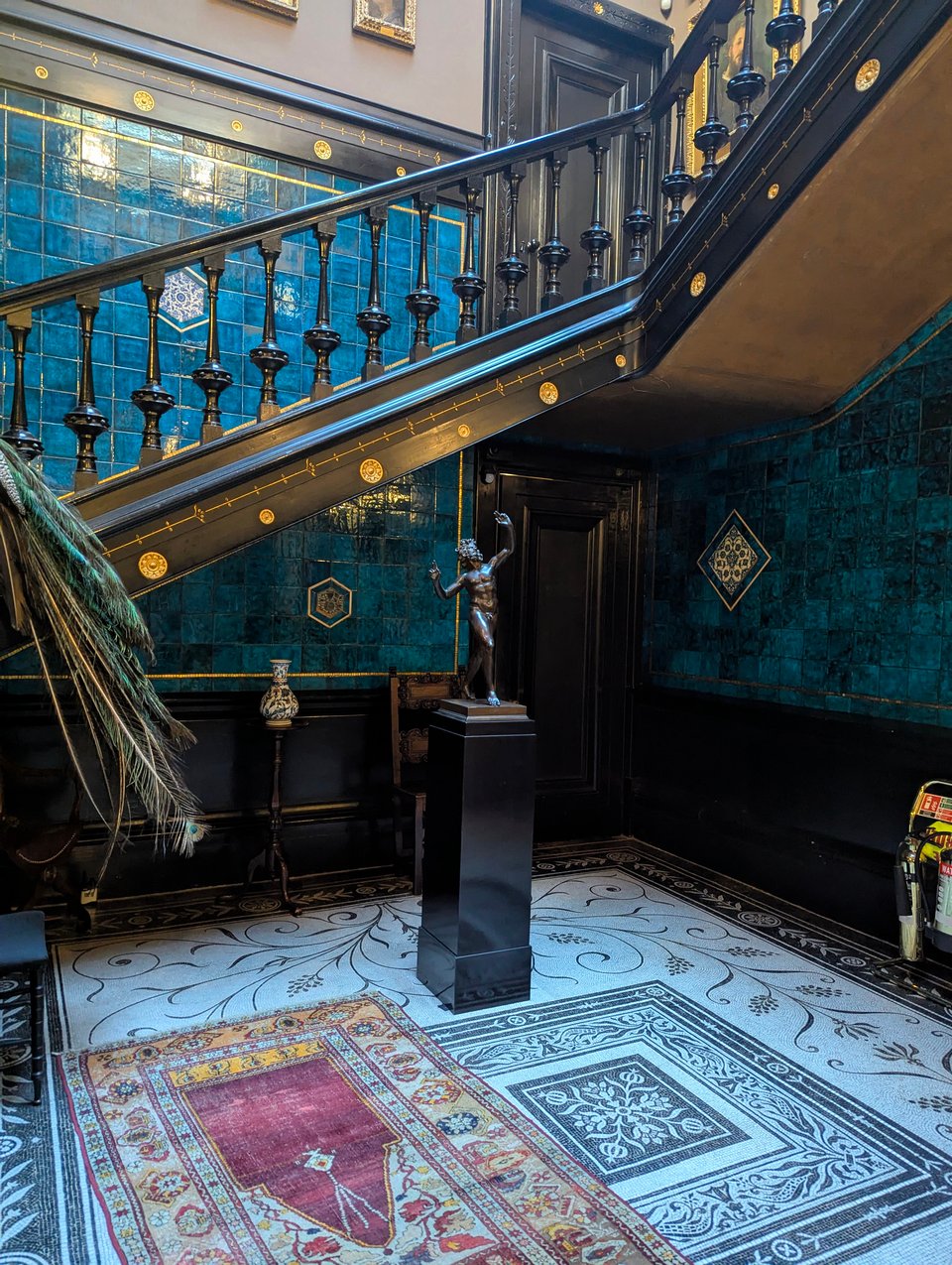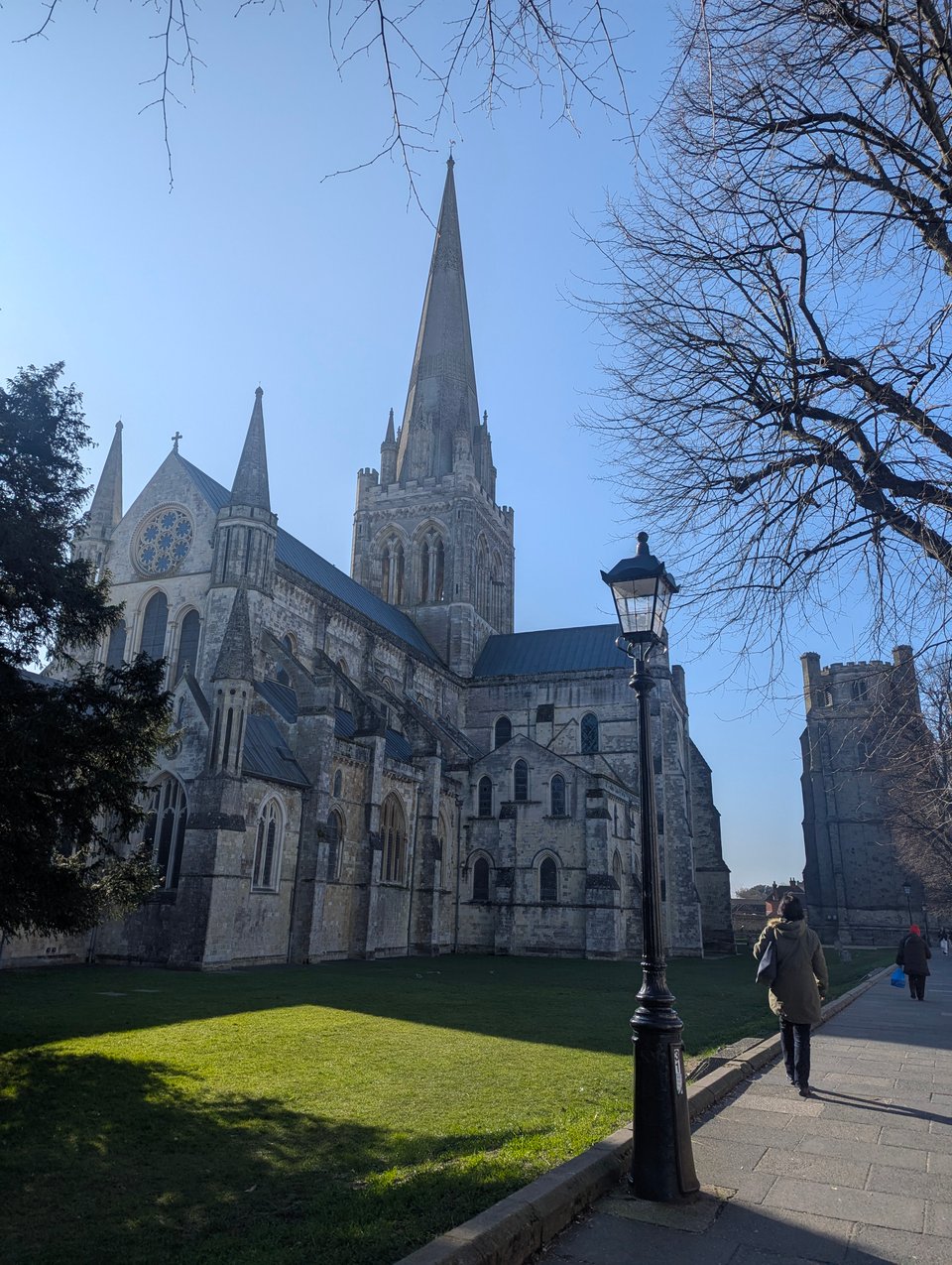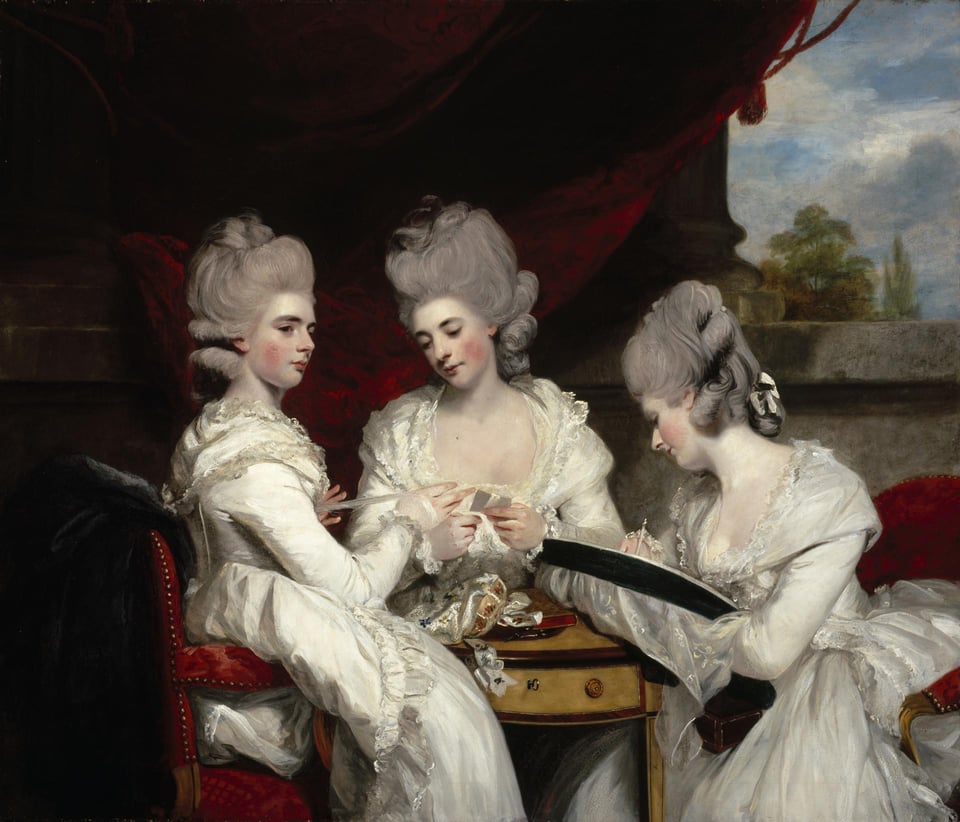O, to be in England
Hello, and happy almost-spring! Depending on location. I've just gotten back from a trip to London, and I found that late February-early March there is considerably more like late March-early April in upstate New York - all sorts of flowers were coming up, and it was very springlike. Whereas when I drove home from the train station after getting back to the US, it snowed almost the whole way.

Most of the sightseeing that I did dual-classed as tourist behavior and writing research. Hampton Court Palace, Strawberry Hill, Ham House and Gardens, Leighton House, and Sambourne House were excellent locations to wander around in order to get the sense of existing in various types of historical buildings, from a middle-class family home in the heart of London to, of course, an actual palace.

None of them are very relevant to the Happy Secret sequel at this time — currently titled A Grand and Glorious Feeling — but you never know. Strawberry Hill's excellent Gothic revival decor has to work its way into something I write, sooner or later, and Sambourne House has a very “ordinary Victorian" vibe that I know will be useful.

I also wandered around St. James's Palace, Pall Mall, and Grosvenor Square for exteriors. And I was briefly in Chichester after seeing Fishbourne Roman Palace, which was a lovely little city. I want to put a scene in a cathedral now.
I didn't write very much most of the time I was abroad, but on the train to/from Fishbourne and on the plane I did go full-speed-ahead and make some great progress. The lack of distractions in mass transit always helps me focus — I wish I could take a bus to and from work and get a good half hour in the morning and evening to write.
Mary Marchbanks received another query rejection while I was away, and I've been pondering leaving off on querying agents and releasing it serially via a newsletter like this one. It's written in a pastiche nineteenth-century style, which makes it read as if it might have been published chapter-by-chapter in a Victorian ladies' magazine, to be honest. I've found when posting and reading fanfiction that the experience of following a story that regularly releases updates is really fun and engaging! I don't know what platform I might use, but I want to finish Grand and Glorious first, anyway.
This month's fashion history corner focuses on the triple portrait, The Ladies Waldegrave, which I saw in reproduction at Strawberry Hill. (The house was owned by Horace Walpole, the great-uncle of the women in the painting and the person who arranged for it to be painted, according to the docent.)

The sisters are dressed identically and with apparent simplicity in white gowns and petticoats. However, these outfits are actually the height of fashion for 1780. Their deep collars, extending down over the top of the shoulder, are typical of the new, orientalizing styles like the levite or the robe a la turque. The turque also typically fastened at the center of the neckline and flowed away to the hips, as can be seen on the sitter at the right — a new way to handle the front of the gown, which had been pinned down to a stomacher in the past. The sleeves that go all the way to the wrist, where they're trimmed with a narrow ruffle, are also a new fashion, called “amadis sleeves". Their hair is also styled fashionably, looking exactly like that of the prints in contemporary fashion periodicals like the Lady's Magazine or Galerie des Modes.
The sisters are also all involved in textile crafts as they cluster over a small worktable. The women at the left and center seem to be winding ribbon or thread, while the last sister is actively tambouring a sheer muslin: tambour embroidery is done in chain stitch with a hook that allows the user to punch a stitch through the fabric without needing to pass the needle all the way through.
See you next month!
